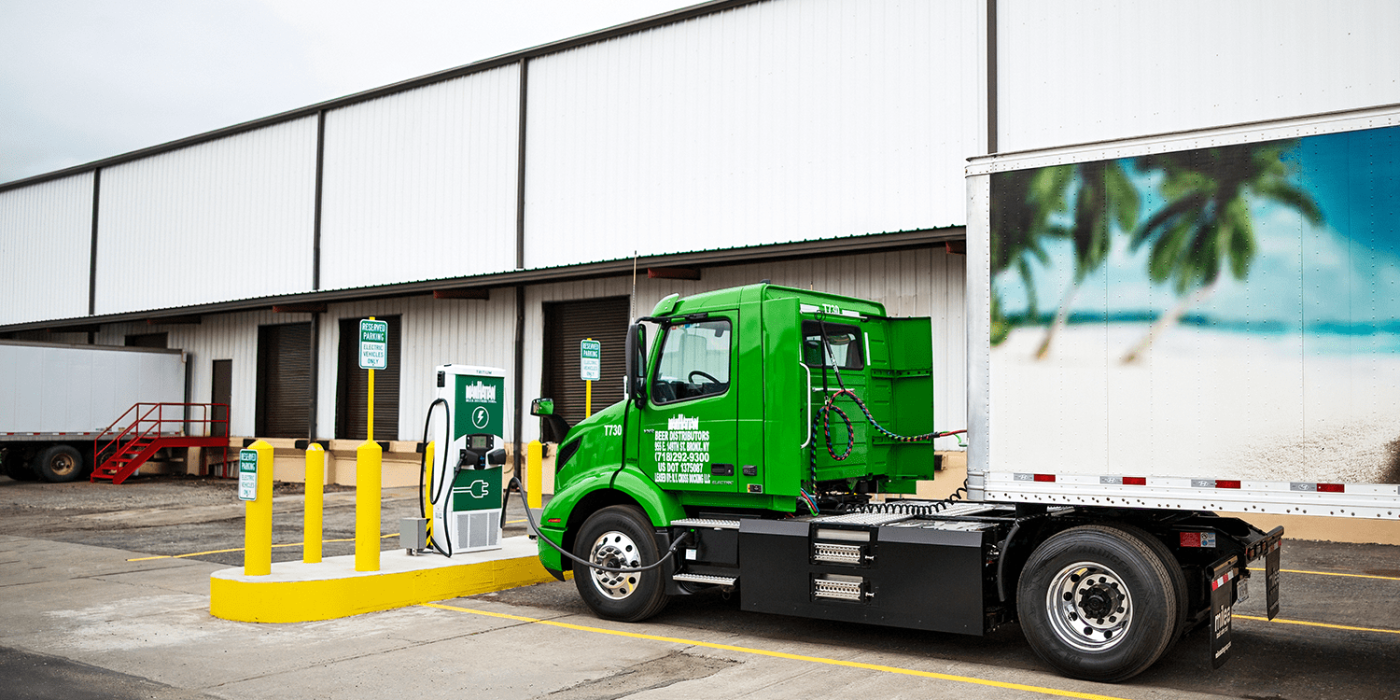HPC corridor for trucks developing in California
The Electric Power Research Institute (EPRI) and Calstart have received $13 million from the California Energy Commission (CEC) to “jump-start” a high-power charging (HPC) corridor for medium- and heavy-duty electric trucks in California.
The first phase of the Research Hub for Electric Technologies in Truck Applications (RHETTA) project begins this month. Here, the goal is to develop, test and deploy high-power charging equipment for electric trucks near Southern California’s two ports. The project aims to develop high power chargers that are capable of providing enough power for 100 miles (160 kilometres) in less than ten minutes.
The project partners want to install two high-power charging demonstration sites, each with two charging units. One of the two sites will be located near the ports of Los Angeles and Long Beach while the other will be located in the Inland Empire (which is a block adjacent to the coast in southern California extending into central California).
For the development of adequate infrastructure, the project aims to create an online freight heatmap that should show freight hubs and travel patterns along major freight corridors. This should also show locations for truck charging in a web-accessible tool. A plan is also to be developed for a charging corridor network across the state. This should include a workforce deployment strategy as well as templates for key freight corridors.
Jasna Tomic, vice president at Calstart said: “With equity as a critical lens to our technical planning, Calstart looks forward to collaborating with the Energy Commission, industry, and communities to deploy the nation’s first, zero-emission freight corridor.”
This sector in this area of the world has received considerable focus in the last 12 months. In December just passed, Nikola Motors delivered the first units of its Nikola Tre battery-electric truck in the USA to logistics provider Total Transportation Services (TSSI), which serves the California Port of Los Angeles and Long Beach. The Port of Los Angeles is also trialling fuel cell trucks and infrastructure with the deployment of five FC trucks and two hydrogen fueling stations.
Also in the same area earlier last year, the Volkswagen subsidiary Electrify America announced it will direct $25 million of the investment for a ‘Green City’ scheme in the City of Long Beach and the Wilmington neighbourhood of Los Angeles, focusing on charging stations for electric transit buses and trucks.
The Port of Los Angeles is the nation’s busiest port complex and is served by a fleet of more than 18,000 drayage trucks. Covid-19 did not slow down activity at the port, in fact, in the middle of last year, the Ports of Los Angeles and Long Beach claimed cargo records for the previous seven months, with shipping volumes up 46 and 43 per cent, respectively, year-over-year. The Port of Los Angeles noted that the San Pedro Bay port complex operations and commerce facilitate one in nine jobs across the counties of Los Angeles, Orange, Riverside, San Bernardino and Ventura.
The charging corridor project Electric Power Research Institute (EPRI) and Calstart will include the partners: Southern California Edison; Southern California Association of Governments; GRID Alternatives; Cambridge Systematics, Inc.; Burns & McDonnell Engineering Company, Inc.; Momentum; ORBCOMM, Inc.; GNA; Paul International; MMX, LLC; and TravelCenters of America, LLC, as well as labs and universities that includes Lawrence Berkeley National Laboratory, DOE National Renewable Energy Laboratory, and University of California, Riverside.





0 Comments